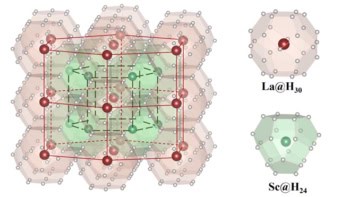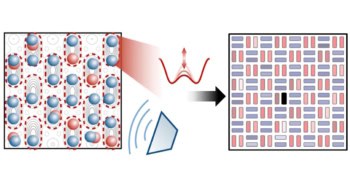Physicists in Japan and the US have confirmed that magnesium diboride contains two superconducting energy gaps. Although theorists had predicted that the material had two gaps, they had never been observed in an experiment. The gaps are thought to be responsible for the relatively high superconducting transition temperature of 38 K observed in the material (S Souma et al. 2003 Nature 423 65).

Superconductivity occurs when electrons in a material bind together to form Cooper pairs that can travel through the sample without resistance. At low temperature, the electrons overcome their mutual repulsion by interacting with lattice vibrations called phonons. The energy gap of a superconductor is the energy needed to break the electron pair apart.
Magnesium diboride consists of hexagonal planes of boron atoms separated by planes of magnesium atoms, with the magnesium centred above and below the boron hexagons (see figure). This structure is very similar to that of graphite: each carbon atom – which has four valence electrons – is bonded to three others and occupies all planar bonding states (the sigma bands). The remaining electron moves in orbitals above and below the plane to form pi bands. Boron atoms have fewer valence electrons than carbon so not all of the sigma bands are occupied. This means that lattice vibrations in the planes are much larger, which results in the formation of strong electron pairs.
Most superconductors have only one energy gap but in 2002, theorists predicted magnesium diboride might have more than one. These gaps develop simultaneously at the superconducting transition temperature, Tc. Now, Takashi Takahashi from Tohoku University and colleagues have used high-resolution photoemission spectroscopy (ARPES) to directly observe the two gaps by resolving the sigma and pi bands.
Tahakashi and co-workers measured ARPES spectra at two temperatures below and above Tc (17 K and 45 K). They found that the sigma bands have a large gap of 6-7 meV, whereas the pi band has a smaller gap of 1-2 meV. These results agree with previous reports. As the superconductivity of magnesium diboride is bulk in nature, the researchers conclude that the sigma band is dominant.



